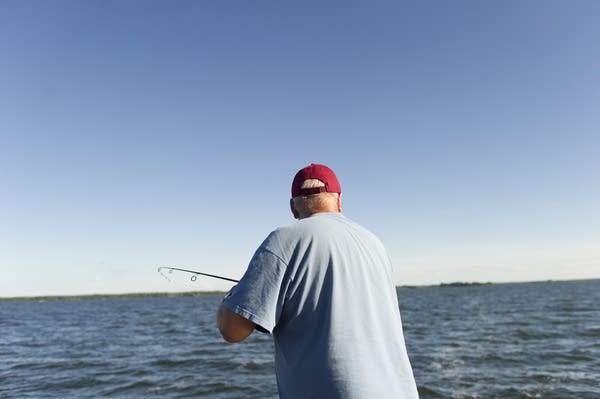DNR lifts live bait ban on Mille Lacs walleye fishing

Go Deeper.
Create an account or log in to save stories.
Like this?
Thanks for liking this story! We have added it to a list of your favorite stories.
Updated: 3:18 p.m. | Posted: 11:50 a.m.
Just weeks after banning anglers from using live bait this season while fishing for walleye on Lake Mille Lacs, Minnesota conservation officials changed course.
Live bait will now be allowed on Mille Lacs starting with the May 14 fishing opener, although the catch-and-release only rule for walleye remains in place, the Minnesota Department of Natural Resources said Thursday.
Turn Up Your Support
MPR News helps you turn down the noise and build shared understanding. Turn up your support for this public resource and keep trusted journalism accessible to all.
The DNR said it decided to allow live bait after getting feedback from its local advisory panel. The agency is "hearing that anglers are accepting of the catch-and-release aspect of the walleye season, but members of the Mille Lacs Fisheries Advisory Committee heard clear concerns about the live bait restriction, as did the DNR," Don Pereira, the DNR's fisheries section chief, said in a statement.
Live bait use is part of a long Mille Lacs tradition and it would be "difficult for some anglers to adapt to using only artificial bait, and it could particularly discourage young anglers," according to the DNR release.
The DNR has been particularly concerned about "hooking mortality," the fish that die after being caught and returned to the water.
"Hooking mortality increases as water temperatures warm and catch rates increase. Both factors are at play in Mille Lacs this year," the DNR said. "Studies show anglers using only artificial bait can reduce hooking mortality substantially because fish are less likely to swallow artificial bait and suffer internal damage from a hook."
A multitude of studies back this idea, showing that live bait use kills fish at higher rates than artificial bait and lures, said Ray Newman, a University of Minnesota fisheries professor.
Anglers using artificial bait or lures more often hook the fish in the mouth or jaw, he said. Those hooks are easier to remove.
But with live bait, Newman said, the hook will often go farther down in the fish's mouth or throat. Taking those hooks out is more difficult for the angler and it puts more stress on the fish, which can be detrimental to the fish's health — on top of the hook that may be piercing its insides.
Pereira said the initial decision to include a live-bait ban for Mille Lacs regulations reflected the desire of anglers and area businesses to keep walleye fishing open as long as possible.
The DNR's announcement in late March that it would ban live bait and enforce catch-and-release only for Mille Lacs walleye sent shock waves among resort owners and businesses that depend on walleye fishing on the iconic lake. Many had been hard hit last year by the state's decision to close the open-water walleye season early on Mille Lacs. The Minnesota Department of Natural Resources OK'd a winter walleye season but the warm weather put a damper on it.
Still, the DNR's decision isn't much help for John Odle, who owns the Rocky Reef Resort near Onamia, Minn. He's had many reservations canceled already this year, and he doesn't think they'll come back just to use live bait. They've probably made vacation plans elsewhere, Odle said.
"The damage is done. We lost what we lost," he said. "Nothing's changed. Giving us live bait has just said, 'Well, we're going to be able to shut you down even earlier than August.'"
He thinks the DNR's choice has just angered people more.
"It shows how indecisive their decision-making process is," Odle said, adding that he foresees a difficult couple years ahead due to Mille Lacs' walleye woes.
Officials said the stiffer rules for the coming season were needed to conserve young walleyes so they could mature and become spawners, helping the lake's population to recover. Mille Lacs' walleye population has fallen significantly in recent years and officials have struggled to balance the demands of local businesses dependent on walleye fishing with the need to rebuild the fishery.



